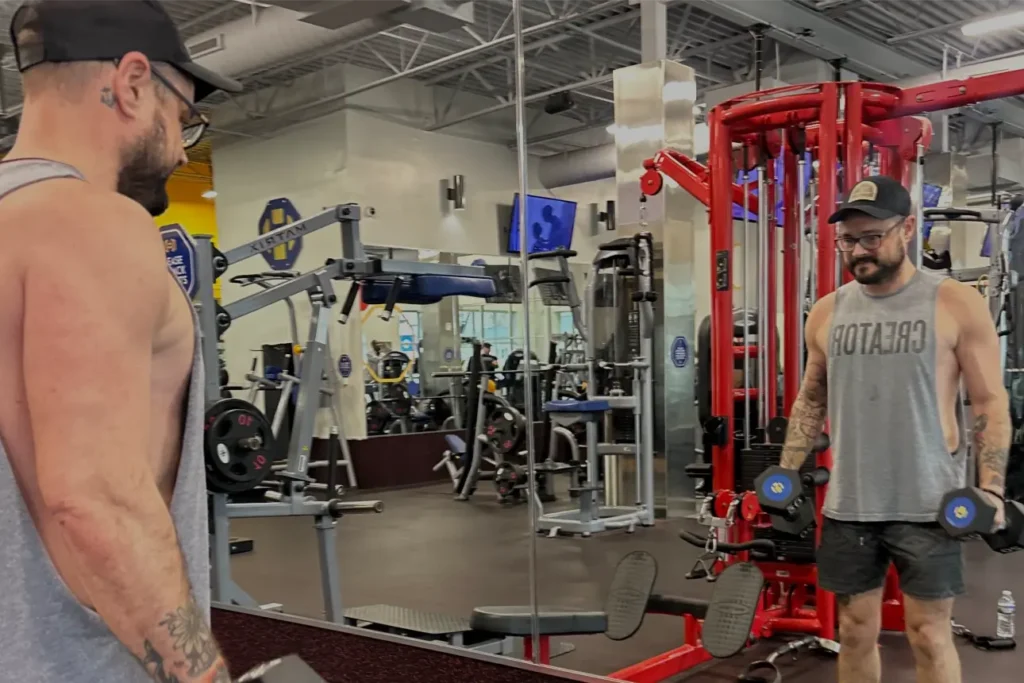Weightlifting, like any physical activity, comes with its set of risks and challenges. One common issue that many weightlifters face is wrist pain. This discomfort can be a significant hindrance, affecting one’s ability to perform exercises effectively and safely. Understanding the causes of wrist pain and implementing preventive measures is crucial for maintaining a healthy and sustainable weightlifting routine.
Understanding wrist pain in weightlifting
The wrist is a complex joint that consists of multiple bones, ligaments, and tendons, all working together to provide a wide range of motion. However, this complexity also makes it susceptible to injury, especially during weightlifting, where the wrist is often under significant stress.
- Anatomy of the wrist: The wrist is made up of eight small bones called carpal bones, which are connected to the two long bones of the forearm, the radius, and the ulna. Ligaments and tendons provide stability and support to the wrist, allowing for movement and the transmission of force from the arm to the hand.
- Common causes of wrist pain: Wrist pain in weightlifting can be attributed to several factors. Poor form and technique can place undue stress on the wrist, leading to strains or sprains. Overuse injuries, such as tendinitis, can occur from repetitive motions or lifting excessive weights. Additionally, improper wrist position during exercises like the bench press or overhead lifts can result in compression of the nerves, leading to pain and discomfort.
Preventing wrist pain in weightlifting
To avoid wrist pain and ensure a safe weightlifting experience, several preventive measures can be taken:
- Proper technique: Maintaining proper form during exercises is crucial. Ensure that the wrist is in a neutral position, aligned with the forearm, to reduce the risk of injury. Seek guidance from a certified trainer to correct any form-related issues.
- Wrist-strengthening exercises: Incorporating wrist-strengthening exercises into your routine can help build the muscles and tendons around the wrist, providing better support and stability. Wrist curls, reverse wrist curls, and grip-strengthening exercises are effective options.
- Use of wrist wraps: Wrist wraps can provide additional support and stability to the wrist, especially during heavy lifts. They help in keeping the wrist in a neutral position and distribute the load more evenly, reducing the risk of injury.
Treating wrist pain
When wrist pain occurs, it’s essential to address it promptly to prevent further injury and ensure a speedy recovery. Here are some steps to treat wrist pain:
- Immediate care: The first line of treatment for wrist pain typically involves rest, ice, compression, and elevation (RICE). This approach helps reduce inflammation and alleviate pain. Avoid activities that exacerbate the pain, and apply ice to the affected area for 15-20 minutes several times a day.
- Long-term recovery strategies: Once the initial pain and swelling have subsided, rehabilitation exercises can help restore strength and flexibility to the wrist. These may include gentle stretching and strengthening exercises. It’s crucial to start slowly and gradually increase the intensity to avoid re-injury.
If the pain persists or is severe, it’s advisable to consult a healthcare professional for a proper diagnosis and treatment plan. In some cases, physical therapy, medication, or even surgery may be necessary.
Tips for safe weightlifting
To prevent wrist pain and other injuries, follow these tips for safe weightlifting:
- Gradual progression: Avoid the temptation to lift heavier weights too quickly. Gradually increase the weight and intensity of your workouts to allow your body to adapt and build strength safely.
- Listening to your body: Pay attention to any signs of discomfort or pain in your wrists or other parts of your body. If something feels wrong, stop the exercise and reassess your technique or the weight you’re lifting.
- Seeking professional advice: Working with a certified personal trainer or a physiotherapist can provide valuable guidance on proper technique and form. They can also help you develop a balanced workout plan that promotes overall strength and reduces the risk of injury. If you are looking for a personal trainer in Gastonia who will make sure you’re using the proper form and help you avoid potential injuries, visit HiTone Fitness.
- Using proper equipment: Ensure that you have the right equipment for your workouts, including supportive footwear, gloves, and wrist wraps if needed. Using equipment that’s in good condition and suitable for your level of fitness can help prevent injuries.
Final thoughts
Wrist pain in weightlifting is a common issue that can be effectively managed with the right approach. Understanding the causes, implementing preventive measures, and addressing pain promptly is key to maintaining a healthy and sustainable weightlifting routine. By focusing on proper technique, incorporating wrist-strengthening exercises, and using supportive gear, you can protect your wrists and enhance your performance. Remember, listening to your body and seeking professional advice when needed are crucial steps in ensuring a safe and enjoyable weightlifting experience.







